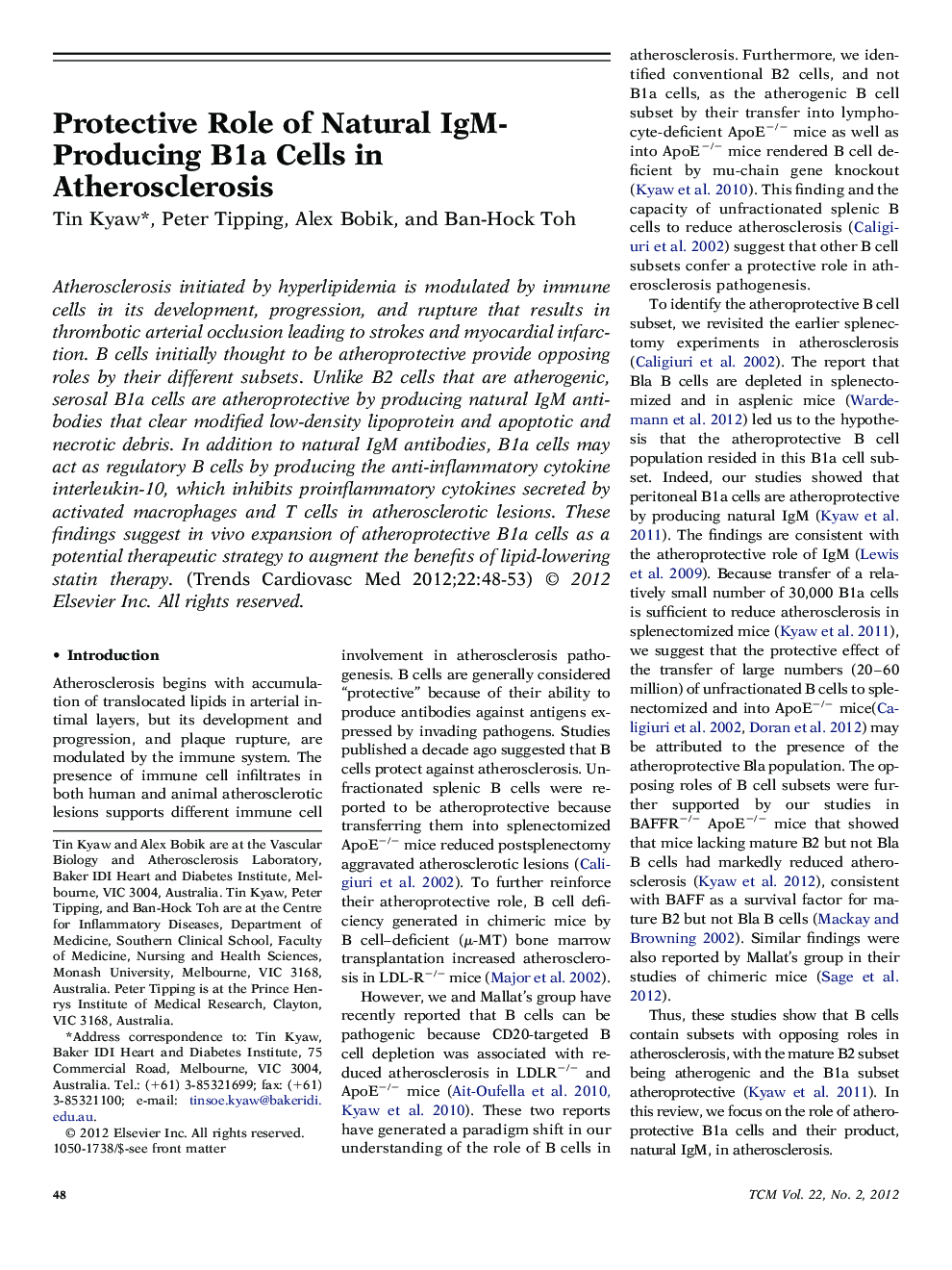| Article ID | Journal | Published Year | Pages | File Type |
|---|---|---|---|---|
| 3031024 | Trends in Cardiovascular Medicine | 2012 | 6 Pages |
Atherosclerosis initiated by hyperlipidemia is modulated by immune cells in its development, progression, and rupture that results in thrombotic arterial occlusion leading to strokes and myocardial infarction. B cells initially thought to be atheroprotective provide opposing roles by their different subsets. Unlike B2 cells that are atherogenic, serosal B1a cells are atheroprotective by producing natural IgM antibodies that clear modified low-density lipoprotein and apoptotic and necrotic debris. In addition to natural IgM antibodies, B1a cells may act as regulatory B cells by producing the anti-inflammatory cytokine interleukin-10, which inhibits proinflammatory cytokines secreted by activated macrophages and T cells in atherosclerotic lesions. These findings suggest in vivo expansion of atheroprotective B1a cells as a potential therapeutic strategy to augment the benefits of lipid-lowering statin therapy.
